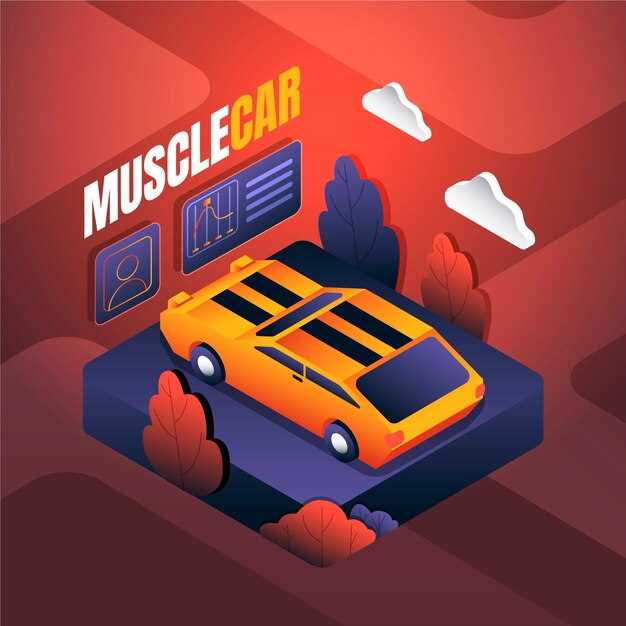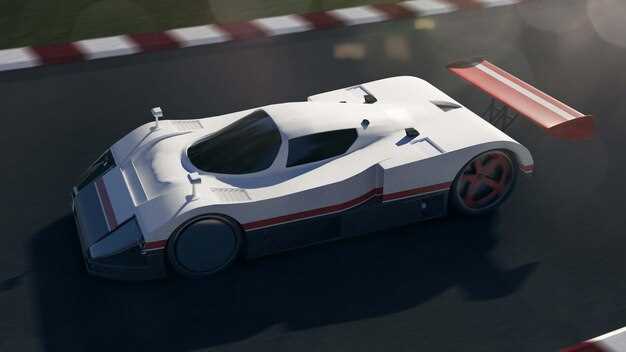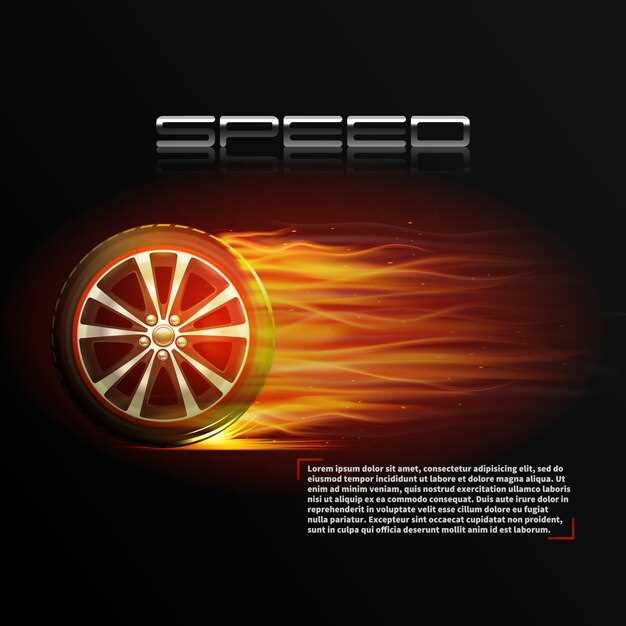
The performance of open-wheel sports cars is inherently linked to the principles of aerodynamics, a branch of fluid dynamics that examines the behavior of air as it interacts with solid objects. In the context of motorsport, understanding how air moves around a vehicle is crucial for optimizing speed, handling, and safety. The design of an open-wheel sports car must carefully balance various aerodynamic elements to achieve the maximum possible performance on the track.
Aerodynamic efficiency encompasses factors such as drag and downforce, both of which significantly affect a vehicle’s speed and stability. Drag refers to the resistance an object faces as it moves through air, while downforce is the downward pressure created by aerodynamic elements, enhancing tire adhesion and cornering capabilities. Open-wheel cars, characterized by their exposed wheels and minimal bodywork, are particularly sensitive to these aerodynamic forces. A well-designed car can slice through the air, minimizing drag while simultaneously generating substantial downforce.
The impact of aerodynamics extends beyond mere speed; it influences how a car behaves under various conditions. During high-speed runs, the balance of downforce and drag can dictate a driver’s ability to maneuver through corners or respond to sudden changes in direction. Innovations in aerodynamics, such as adjustable wings and diffuser designs, have revolutionized open-wheel racing, allowing teams to tailor their cars to specific tracks and conditions. Ultimately, exploring the relationship between aerodynamics and vehicle performance sheds light on the technological advancements that continue to shape the future of motorsport.
Understanding Drag Forces in Open-Wheel Designs

In open-wheel racing, drag forces play a critical role in shaping the performance and efficiency of the vehicle. Drag is the aerodynamic resistance experienced by the car as it moves through the air, which can significantly impact acceleration, top speed, and fuel efficiency. Understanding the components of drag forces can help engineers and designers optimize the aerodynamic characteristics of open-wheel cars.
There are two primary types of drag: parasitic drag and induced drag. Parasitic drag, also known as form drag, is generated by the shape of the vehicle and its components, such as the wheels, bodywork, and suspension. This type of drag is particularly pronounced in open-wheel designs due to the exposed wheels, which create significant turbulence and increase the overall surface area encountering wind resistance.
Induced drag, on the other hand, is associated with the generation of downforce. As the car’s speed increases, so does the necessary downforce to maintain traction, resulting in a corresponding rise in induced drag. This relationship presents a challenge in open-wheel car design, as achieving optimal downforce without excessively increasing drag is essential for maintaining competitive performance.
To minimize drag forces, manufacturers often implement various aerodynamic features, including streamlined body shapes, diffusers, and rear wings. These components are strategically designed to manage airflow around the car, reducing turbulence and promoting smoother transitions. Additionally, the wheel fairings can be utilized to shield the wheels from oncoming air, lowering the parasitic drag generated by the exposed tires.
Wind tunnel testing and computational fluid dynamics (CFD) simulations are essential tools in understanding and reducing drag. These methods allow engineers to visualize airflow patterns and measure drag coefficients under various conditions, enabling informed design decisions. Moreover, maintaining a balance between drag reduction and maintaining adequate cooling for engine components and brakes is crucial, as overheating can impair performance.
In summary, drag forces in open-wheel designs are a pivotal consideration in automotive engineering. By focusing on reducing both parasitic and induced drag, engineers can enhance overall performance, improve fuel efficiency, and achieve faster lap times. The ongoing research and development in aerodynamic technologies continue to push the boundaries of what is achievable in open-wheel racing.
Optimizing Downforce for Enhanced Cornering Capabilities

Downforce is a critical factor in the performance of open-wheel sports cars, directly influencing their cornering abilities. The aerodynamic design of a vehicle plays a significant role in generating downforce, which counteracts the effects of lateral forces experienced during high-speed cornering. Achieving the optimal balance of downforce is essential for maximizing grip and maintaining control through various curves.
To enhance cornering capabilities, engineers focus on several key elements of a car’s aerodynamic setup. One of the primary methods is the design and adjustment of aerodynamic components such as front and rear wings, diffusers, and other bodywork features. The angle of attack for wings can be modified to increase downforce without drastically increasing drag. A well-designed front wing can provide the necessary front-end grip, while an appropriately calibrated rear wing stabilizes the vehicle at high speeds, facilitating better cornering performance.
Moreover, the shape and size of the underbody play a crucial role in generating downforce effectively. Ground effect, achieved through a well-designed floor and diffuser, allows a car to harness airflow beneath it, creating a low-pressure area that pulls the vehicle down towards the track surface. This effect can significantly enhance grip, especially when entering and exiting corners.
Balance between front and rear downforce is vital. Excessive downforce at either end can lead to oversteer or understeer, resulting in compromised handling. Engineers utilize simulation tools and wind tunnel testing to fine-tune this balance, ensuring optimal performance under various conditions, such as changing track surfaces and weather scenarios.
Adjustability is another important factor in downforce optimization. Teams often employ adjustable aerodynamic components allowing them to customize settings for specific tracks or weather conditions. This flexibility enables drivers to adapt their vehicles for enhanced performance during qualifying sessions and races.
In conclusion, optimizing downforce is essential for enhancing cornering capabilities in open-wheel sports cars. Through careful design and adjustment of aerodynamic elements, teams can achieve the ideal balance that provides maximum grip and stability, ultimately improving lap times and overall performance on the track.
Evaluating Aerodynamic Balance between Front and Rear Components
Aerodynamic balance is crucial for the performance of open-wheel sports cars, as it directly influences stability, handling, and overall lap times. Achieving an optimal distribution of aerodynamic forces between the front and rear components is essential to maximize grip and control throughout various driving conditions.
Front Aerodynamics plays a significant role in initiating cornering and responding to steering inputs. Front wings are designed to generate downforce, pushing the front of the car toward the track, which enhances turn-in response. However, excessive front downforce can lead to oversteer, making the car less stable at high speeds or during quick directional changes.
Rear Aerodynamics, on the other hand, is responsible for maintaining traction and stability during acceleration and corner exits. The rear wing contributes considerable downforce, helping to keep the rear of the vehicle planted. An imbalanced setup–where the rear generates too much downforce compared to the front–can result in understeer, adversely affecting the car’s ability to navigate corners efficiently.
To evaluate the aerodynamic balance, engineers utilize wind tunnel testing and computational fluid dynamics (CFD). These tools help simulate airflow around the car, revealing how air interacts with both front and rear components. Adjustments to wing angles, ride height, and bargeboards can be made based on insights gained from these analyses.
The center of pressure, a critical concept in this evaluation, refers to the point where the total aerodynamic force acts. Ideally, this point should be positioned to maintain equilibrium between front and rear downforce. If the center of pressure shifts too far forward or backward, it can drastically impact the car’s dynamics, leading to unpredictable handling.
Moreover, real-world testing is essential to validate wind tunnel and CFD results. Track sessions allow engineers to gauge the car’s response in varying conditions and make fine-tuning adjustments to the aerodynamic components. Monitoring tire temperatures, suspension behavior, and telemetry data provides valuable feedback for optimizing the aerodynamic setup.
Ultimately, achieving an ideal aerodynamic balance requires a combination of theoretical understanding, empirical testing, and continuous adaptation to changing conditions. By meticulously evaluating and adjusting the interplay between front and rear aerodynamic components, teams can enhance vehicle performance, providing drivers with the confidence necessary to tackle challenging circuits at high speeds.











